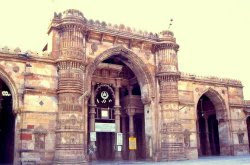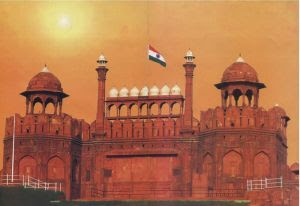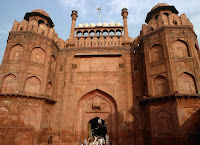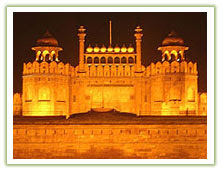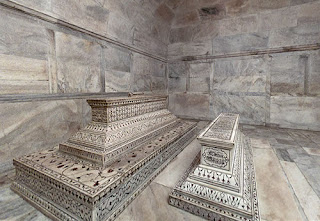
It is a perfect example of the Mughal architectural excellence of the city as well as the country. This attractive white marble tomb was built by Empress Noor Jahan, in memory of her father, Ghias-ud-Din Beg in 1622-25A.D. Mirza Ghiyas Beg was an influential official in the Mughal court and was presented with the title of 'Itmad Ud Daulah' that literally translates into 'the pillar of the state'. The tomb may not be as mammoth as the Taj but the inlay designs and carvings are no less than Taj if not more. The delicate marble latticework in the passages allows the light to enter the interiors.
A similar tomb was built by Nur Jahan for Jehangir in Lahore. This tomb was the first complete marble Moghul structure. Along with the main building, the structure consists of numerous outbuildings and gardens. The tomb, built between 1622 and 1628 represents the transition between the first phase of monumental Mughal architecture - primarily built from red sandstone with marble decorations, as in Humayun's Tomb in Delhi and Akbar's tomb in Sikandra - to its second phase, based on white marble and pietra dura inlay - most elegantly realized in the Taj Mahal.The profusion of delicate carving and inlay work makes the entire tomb look like an expensive jewel casket.
This white marble tomb is situated on the left bank of the Yamuna River and it is set in a large cruciform garden interspersed with water courses and walkways. The base of the tower is about 50 meter square and 1 meter high; the tomb is about 23 meters square and on each corner of the tomb are located hexagonal towers, which are about 13 meters tall. The walls of the tomb are built of white marble from Rajasthan embellished with semi-precious stone decorations that include cornelian, jasper, lapis lazuli, onyx, and topaz. The interiors of the tomb receive light from the delicate jali screens of intricately carved white marble. So come and admire the Itmad Ud Daulah's Tomb on your tours to the monuments in Agra, India with About Taj Mahal in Agra, India.
